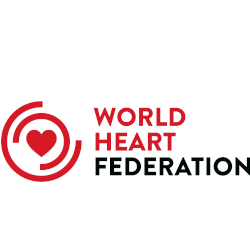Original Research
Clinical Presentation, Risk Factor, and Outcomes of Acute Coronary Syndrome in Women at an Urban Referral Center in Dakar, Senegal
Abstract
Background: Cardiovascular disease is on the rise in Sub-Saharan countries. Recently, consistent studies have reported sex differences in the epidemiology of acute coronary syndrome (ACS). Although, data on the incidence of ACS in Sub-Saharan countries are not rare, few focused closely on women.
Objectives: The purpose of this study was to examine risk factors, clinical presentations, and management strategies in women with ACS.
Methods: This was a retrospective study conducted at the Cardiology Department of Principal Hospital of Dakar over a period of 60 months (January 1, 2010, to December 31, 2014), in Dakar, Senegal. Medical records of female subjects admitted for ACS on the basis of anginal pain at rest, suggestive electrocardiographic changes, and elevated troponin I levels were included. We collected and analyzed the epidemiological, clinical, paraclinical, and evolutionary data of the patients.
Results: Hospital prevalence of ACS in women was 2.32%, meaning 38.1% of patients were admitted for ACS during the same period. The mean age of patients was 68.8 ± 9.5 years; 52% of them were aged between 60 and 69 years. The risk factors in our patients were dominated by hypertension found (63.3%) and diabetes (54.1%). Active smoking was found in 6 patients (6.1%). One-half of patients had more than 1 risk factor. Chest pain was present in 94 patients (95.9%).
The average time delay before medical care was administered was 53.9 ± 18 h. Thirty patients showed signs of left ventricular failure (Killip classes I and II). Electrocardiography revealed ACS with persistent ST-segment elevation in 53 patients (54.1%) and non—ST-segment elevation ACS in 45 patients (45.9%). Mean troponin I level was 1.68 ± 2.3 ng/ml. Doppler echocardiography revealed impaired segmental kinetics in more than one-half of patients. The mean ventricular ejection fraction was 43.8 ± 10.1%. Thrombolysis was performed in 10 patients, accounting for 10.2% of patients with ST-segment elevation. The evolution during hospitalization after a mean hospital stay of 9.5 ± 3.7 days was favorable in 66 patients (67.3%). Six deaths (6.1%) were recorded. Complications was dominated by pulmonary edema.
Conclusions: Our study confirms that ACS is not a “man’s only” disease in Sub-Saharan countries. The major concern is that there appeared to be continuing evidence of suboptimal treatment and intervention in women with ACS in current practice.
Highlights
- CVD is on the rise in Sub-Saharan countries. Recently, consistent studies have reported sex differences in the epidemiology of ACS. Although, data on the incidence of ACS in Sub-Saharan countries are not rare, few focused closely on women.
- Our study confirms that ACS is not a “man’s only” disease in Sub-Sahara countries: the prevalence of ACS in women was 2.32% with an incidence of 38.1% on all patients with coronary heart disease hospitalized during the same period.
- The present study shows that the 3 most important risk factors in Sub-Saharan women are hypertension, diabetes, and obesity.
- The major concern is that there appeared to be continuing evidence of suboptimal treatment and intervention in women with ACS in current practice. In our work, no patients underwent cardiac catheterization, and streptokinase, being the only available thrombolytic in our hospitals, was used in 10.2% of patients admitted with an ST-segment elevation ACS.


